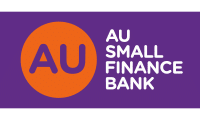Credit cards are simply spectacular. Having one or a few of them with you is nothing bad if you are responsible enough. With credit cards in your pocket, you do not need to carry loads of currency with you. A credit card is quite enough to pay all your bills and can also provide you with funds instantly when stuck in a situation of emergency. But it can also become quite dangerous if not used properly. Therefore, it is very important for you to make the most out of your credit card by paying your bills on time and taking advantage of the credit card’s interest-free period. Understanding how to use a credit card interest-free period wisely is quite necessary as it plays a major role in planning our budget and building wealth with time. But before going any further, let us first understand what exactly do we mean by credit card interest-free period –

What is an Interest-Free Period?
An interest-free period is a period where no interest will be charged on all the new purchases made through the credit card. The purchases continue to be interest-free as long as you pay your statement balances in full every month by the due date. An interest-free period may automatically apply when a new credit card is issued to you. Credit card companies offer a certain number of interest-free days in which no interest will be charged on your purchases made during that cycle. It generally lasts between 45-55 days depending on your billing cycle and bank to bank.
Also Read: All You Need to Know About Credit Card Billing Cycle
How to calculate the interest-free period
The interest-free period usually starts from the first day of the billing cycle and lasts 15-25 days after the statement period ends. By this, we mean that the interest-free period comprises the statement period plus the time you get to pay off your statement balance. Your monthly statement cycle generally comprises 30 days and the time you usually get for paying off the bills is 20 days, which is known as Grace Period. Hence the interest-free period comes out to be of up to 50 days (30 days + 20 days). But this period is not the same for all the purchases made during that period. The near you make purchases towards the end of your billing cycle, the fewer interest-free days you will get.
For example – Your credit card statement is generated on the 25th of every month. Now let us assume that your statement period starts from 25th May and lasts till 24th June and the due date for the payment of your bills is 10th July. Hence, 10th July is the last day of the interest-free period for all the purchases made between 25th May to 24th June. Therefore, if you make a purchase near to the start of the billing cycle, you will get more interest-free period days. But if you make a purchase towards the end of the billing cycle, you will get lesser interest-free period days.
Ways to make optimum use of the interest-free period
If you are a credit card user, it is very important for us to understand how optimally we can make use of the interest-free period to get the most out of a credit card –
- Pay your balances in full monthly – You do not have to pay any interest if credit card balances are paid in full every month by the due date. You can give yourself the advantage of enjoying an interest-free loan by paying all your bills in full and on time. If you are unable to pay your balances in full and carry forward it to the next month, you will have to pay interest on the unpaid amount and slowly it converts into large balances, and ultimately, you fall into a debt trap. Additionally, paying your bills in full and on time will help in improving your credit score which in return will allow you to avail better credit cards and loans in the future.
- Planned purchases – To obtain the maximum benefit out of the interest-free period, you should make purchases when your billing cycle starts. In this way, you will get more time to pay your bills. Also, try not to make any big purchases towards the end of your billing cycle because if you do so, you will have less time to repay for it. For example- (considering the dates in the example mentioned above) You plan to make a purchase of Rs. 10,000 on the 19th of June. But if it is avoidable, you should postpone the purchase to the 19th and make it after the 24th of June so that you get the maximum time of the interest-free period to pay for your purchase. This will lessen your burden of paying an extra Rs. 10,000 near the due date.
- Advantage of Multiple Credit Cards – If you own multiple credit cards, you should plan your purchases in such a way that you get the longest interest-free periods by using these cards. Since you have multiple credit cards, there are very high chances that they all will have different billing cycles. Hence, proper planning and understanding of billing cycles and interest-free period is required to make the optimum use of this period.
- Avoid withdrawing cash from credit card – When you withdraw cash from your credit card, you do not get any interest-free period. The cash processing fee is charged from the day you withdrew cash through your credit card and is applicable till the date of repayment. This fee is charged even during the grace period. Hence, if you want to enjoy the interest-free period to the maximum, you should not withdraw cash using your credit card.
Bottom Line
Banks highly want you to make spending through your credit card. The reason behind this is that they earn commission from the merchant from whom you purchased products by swiping your credit card. But for the repayment purpose, you are given an interest-free period to repay the amount you have spent through your credit card, which means, you will not have to pay any interest on the amount used if you are able to repay the whole amount in full and in time. The interest-free period can range from anything between 45-55 days. With the optimum use of an interest-free period, you can use the amount borrowed from the bank without paying any type of interest on it. But if you fail to make the payment within the interest-free period, you will have to bear the interest portion on the amount used.
The interest-free period generally starts from the day of the billing cycle and lasts 15-20 days post the end date of the billing cycle. You can learn about your billing cycle in your credit card statement. But due to ignorance of the calculation of the billing cycle and interest-free period, many people end up making defaults in their payments and later have to pay a large amount of interest. Hence, to make optimum use of a credit card, it is very important to have detailed knowledge about your billing cycle and interest-free period so that you do not end up paying unnecessary interest on your purchases through your credit card.
If you have any further queries related to the interest-free period, ask us in the comment section below and we would be happy to help you!









